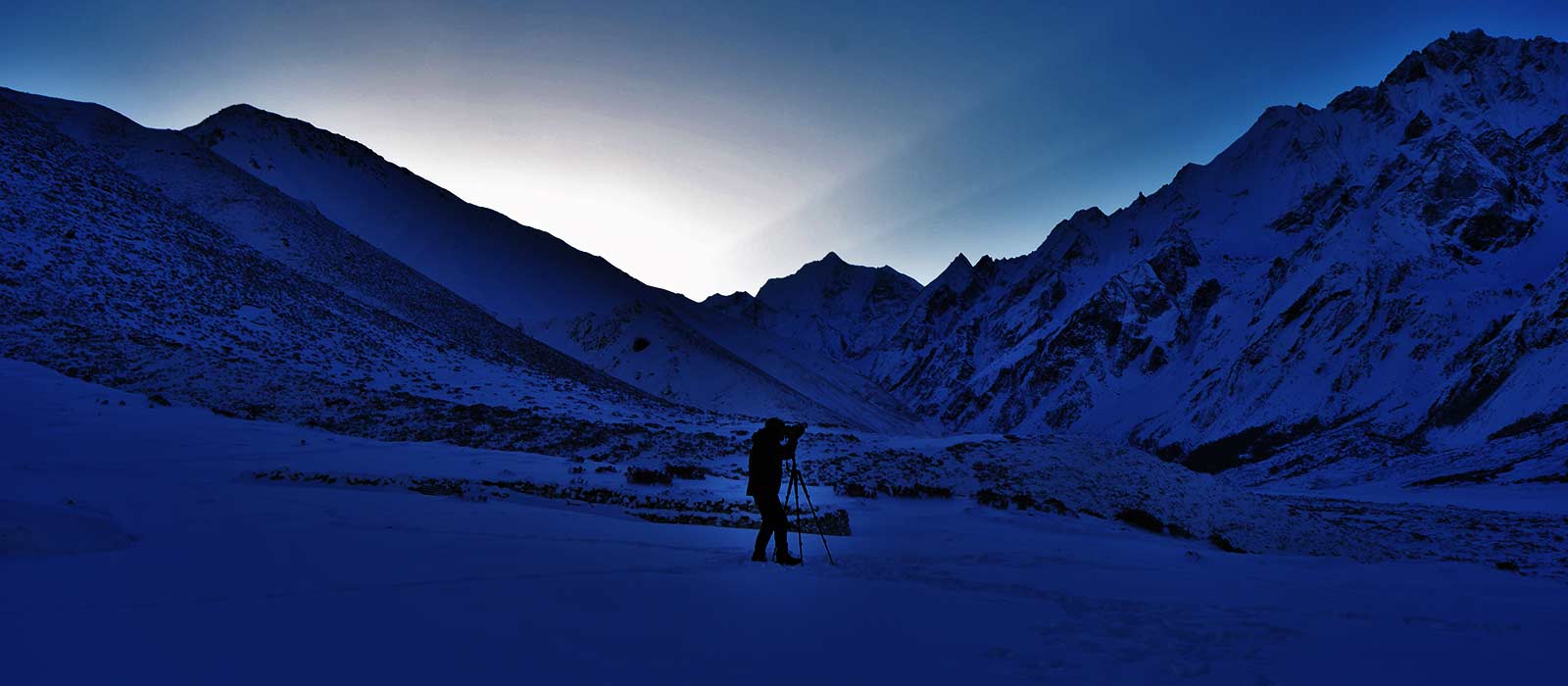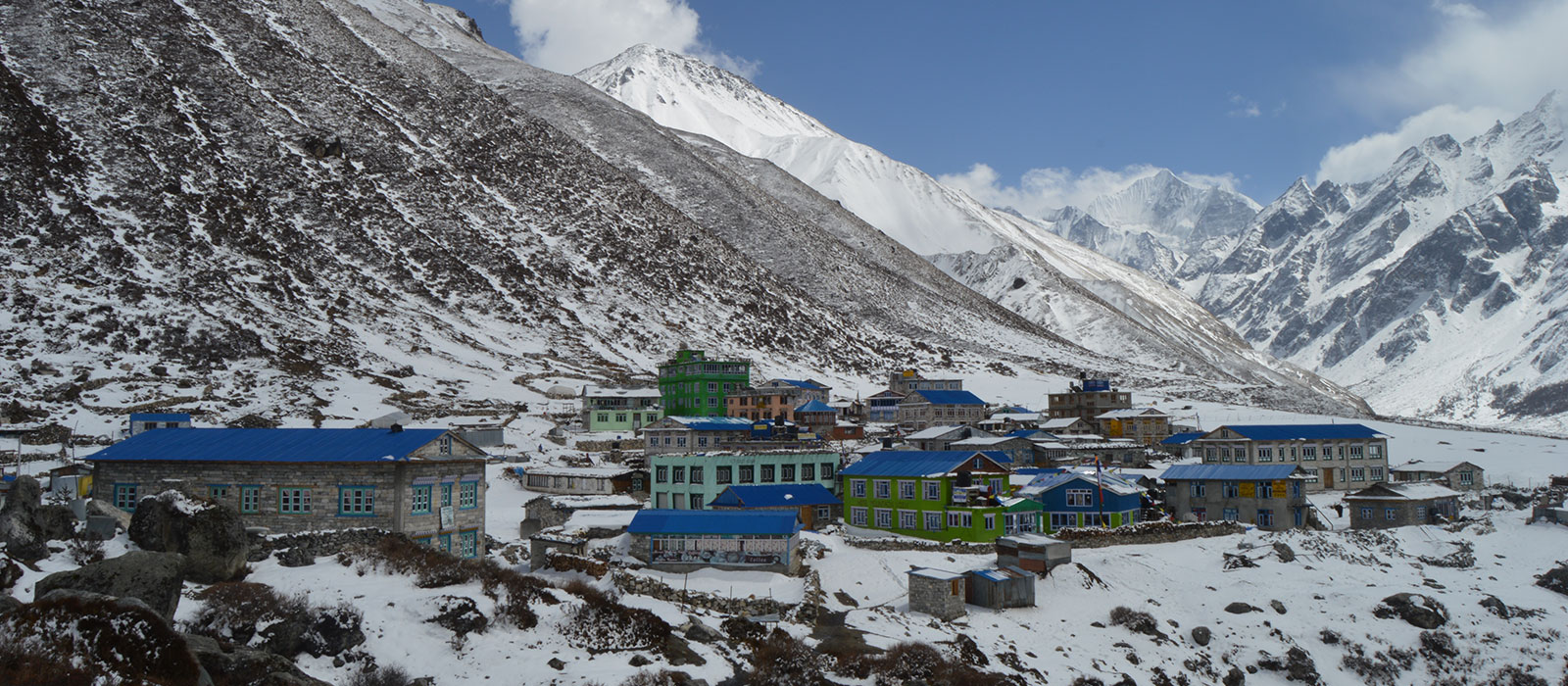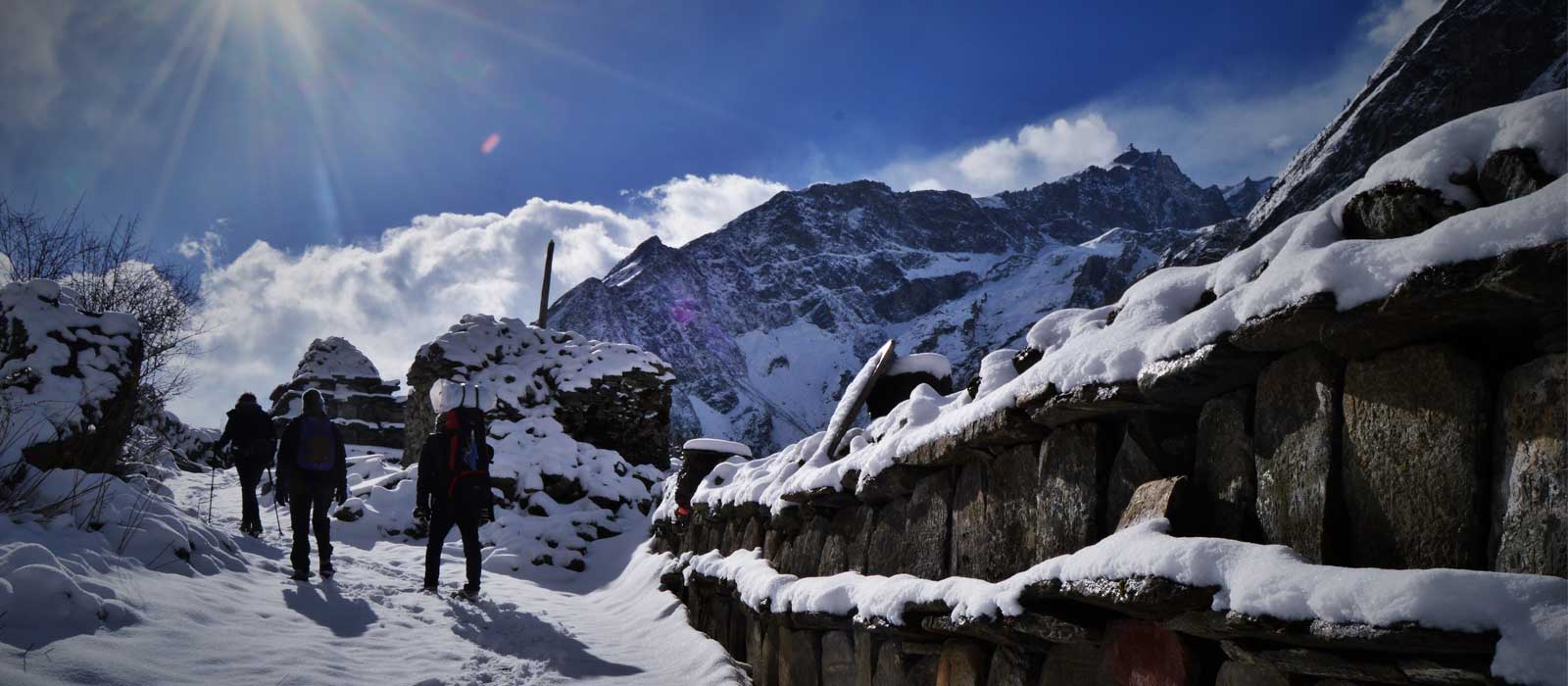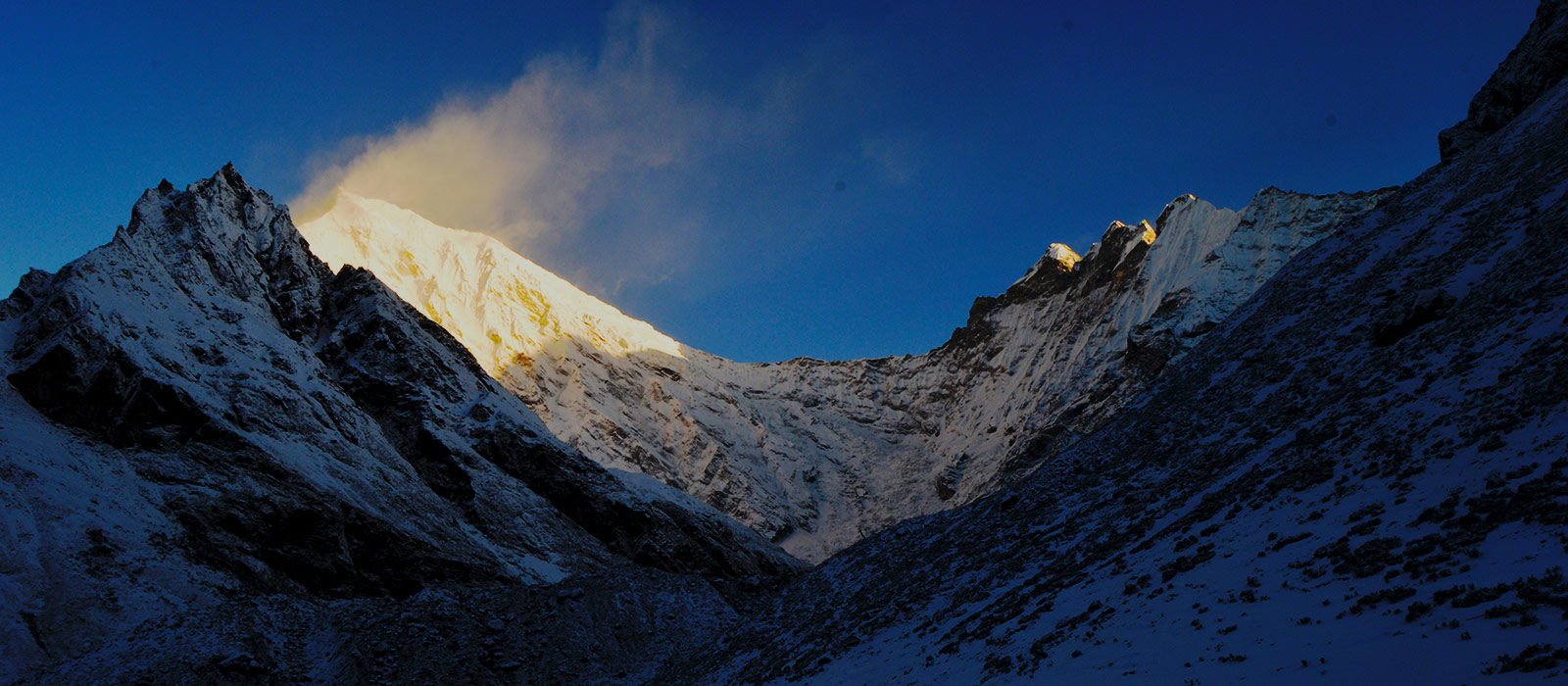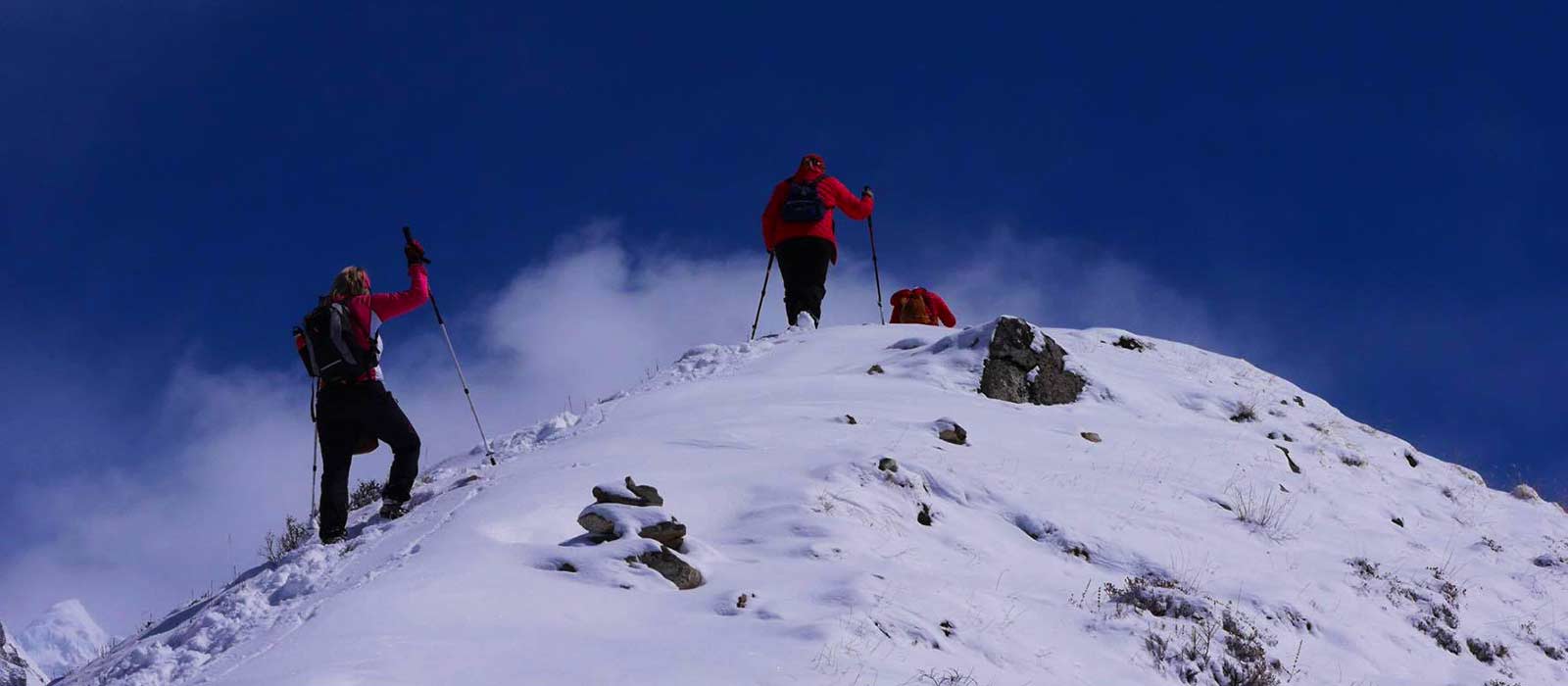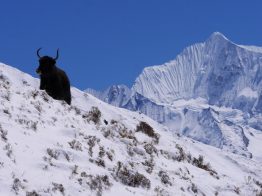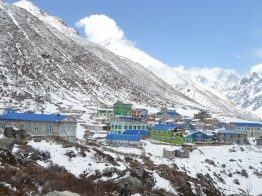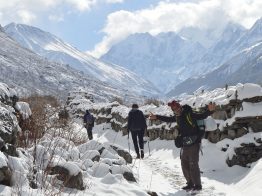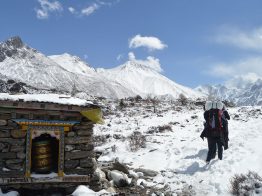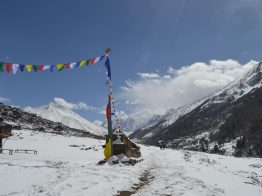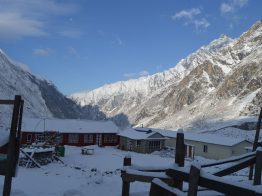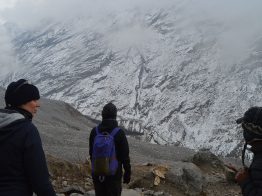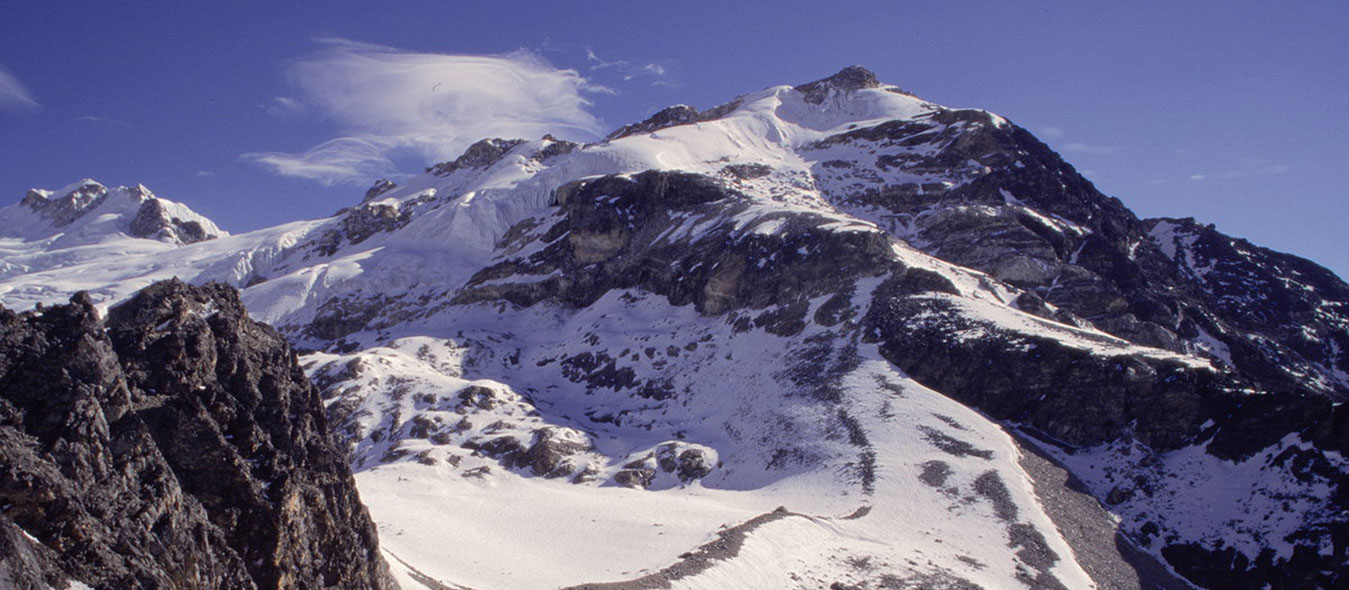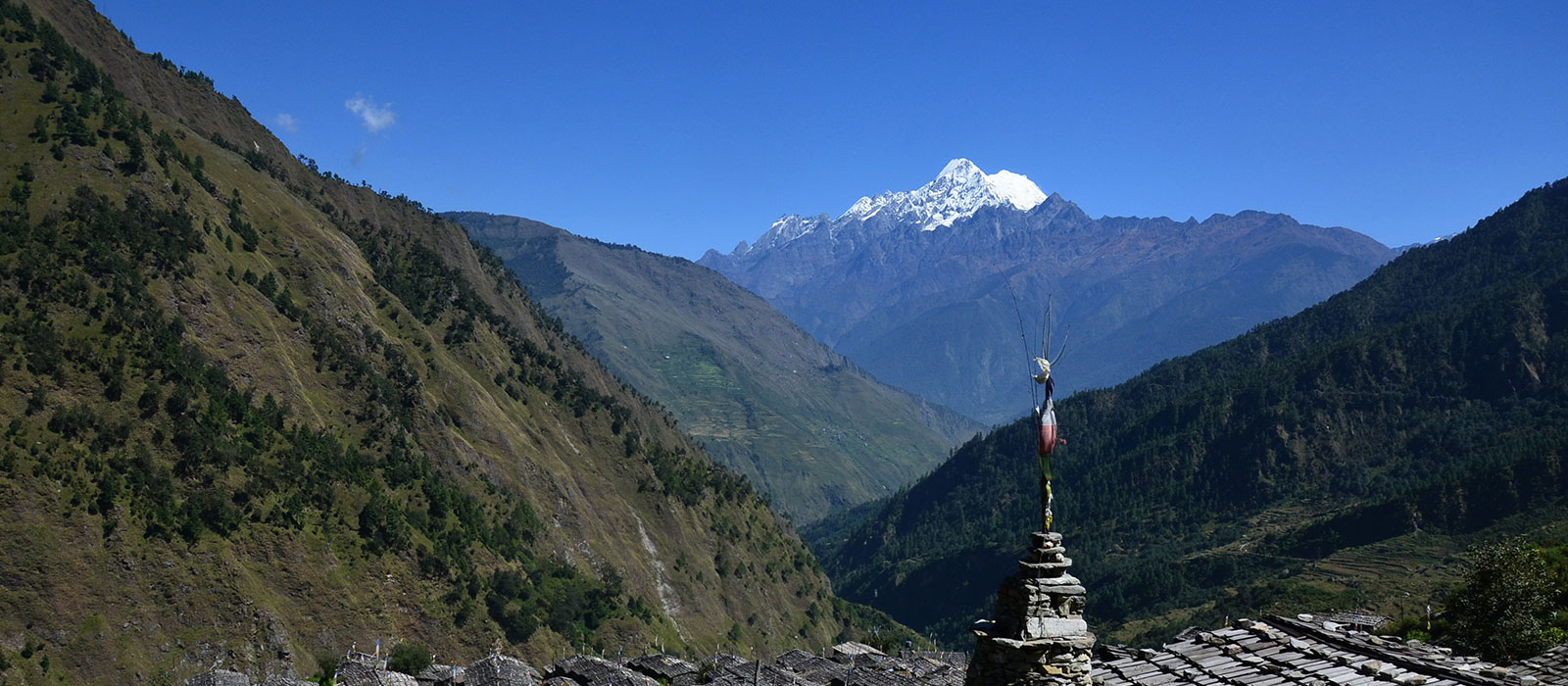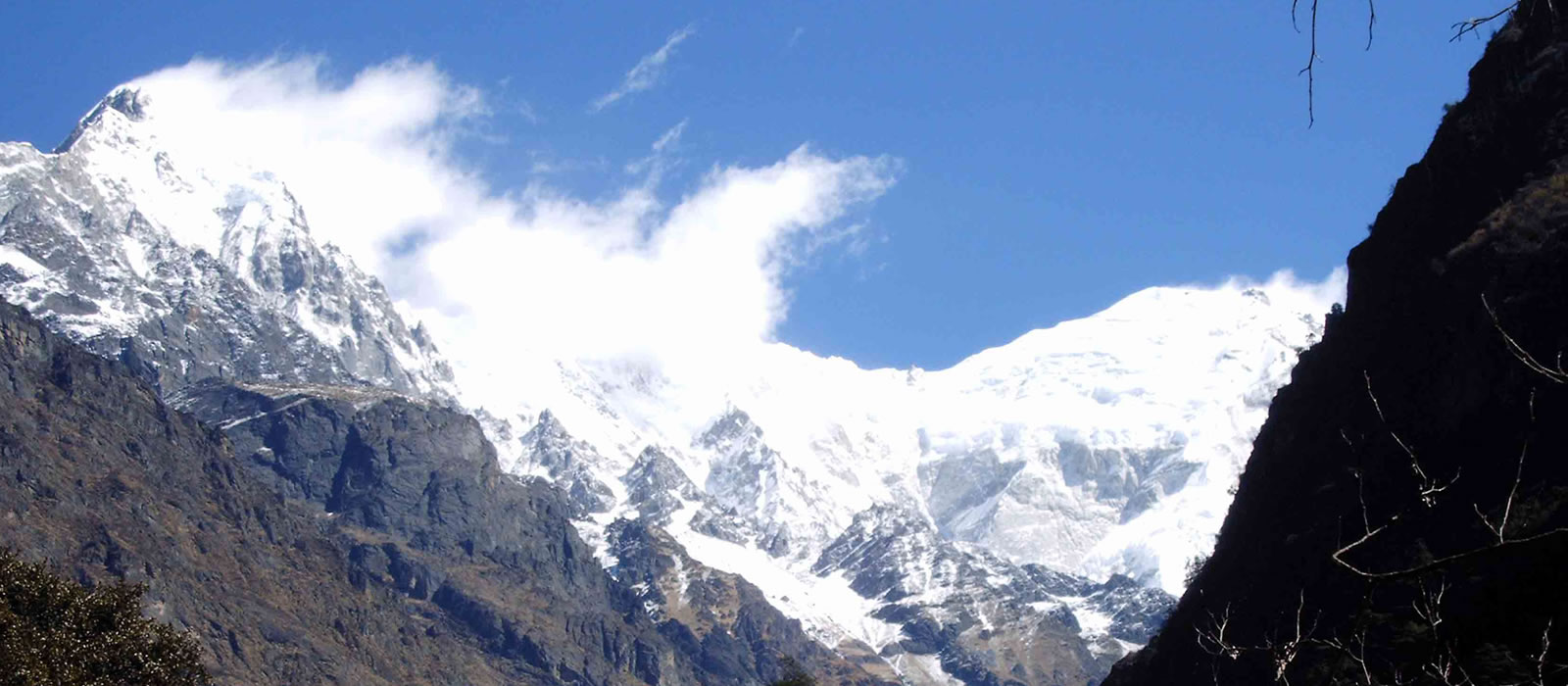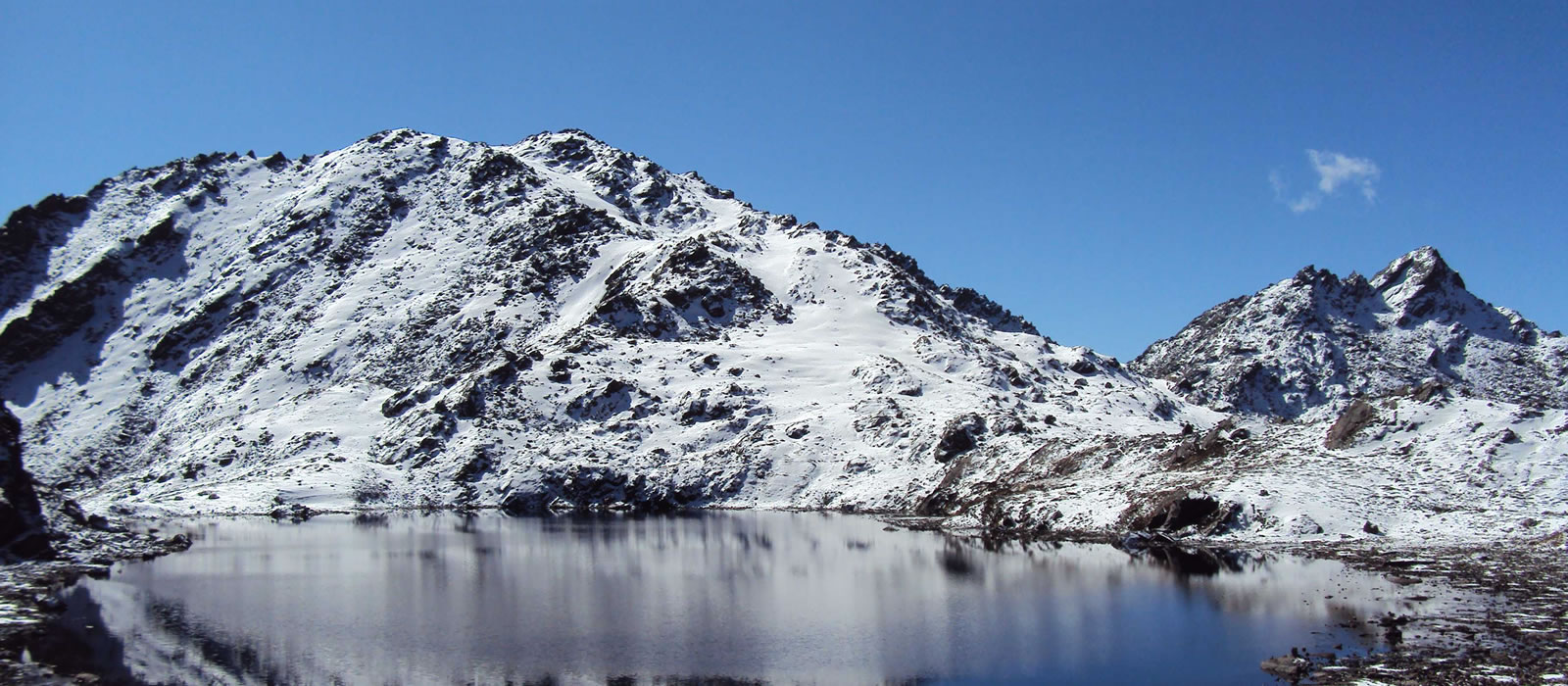| Trip Grade | Moderate |
| Max Altitude | 4773m |
| Activity | Trekking, hiking, sightseeing |
| Group Size | Min 02 Pax |
| Arrival on | Kathmandu |
| Departure from | Kathmandu |
| Meals | All meals during trek & breakfast in city |
| Accommodation | Tea Houses |
Langtang Valley trek is an extraordinarily exquisite trek teeming with natural beauty. This trek used to be one of the most renowned treks in Nepal before the disturbing earthquake that Nepal fell victim to in 2015. Langtang trek is back again with a bang. For the trekkers preferring off beaten path, Langtang Valley Trek is a perfect trek. The steep trails of this trekking route provide you a great amalgamation of adventure and spectacular views.
The trekkers will be exploring Langtang valley located to the north of Kathmandu Valley. This beautiful valley will do you justice. You would be exhilarated by the astounding views you will perceive in this popular trekking destination. Langtang valley trek stands out from other treks due to steep trails, forest enclosed valleys, mind-blowing views at the lower elevation and much more. Langtang valley was one of “Top 52 places to visit in 2017 “ by The New York Times.
For an adventure seeker and nature lover and even novice trekkers with only a week trekking time, Himalayan Holylands Treks and Expedition brings an undeniable opportunity of 8 day Langtang Valley Trek. Langtang Valley Trek is a comparatively brief take encompassing nearly every fundamentals of a classical trek. Langtang valley trekking route will bless you with perennial rivers, thriving jungles, flourishing rhododendron forest, varied flora and fauna, pristine journey and local people’s lifestyle and cultural value.
This valley trek close to Kathmandu comprises of impressive rainfalls, beautiful mountain landscapes. Langtang valley trek takes you a brief part of the Buddhist Culture of Tamang inhabiting there. The Langtang Himalayas, for instance, Langtang Lirung (7245 meters), Dorje Lakpa (6990 meters), Langtang Ri (6370 meters), will be seen through your trekking route. This trek is also a perfect trek for adventurers debuting trekking in this mountain country Nepal.
Langtang valley trek was a bucket list member of many treks before it was wrecked by the tremors back in 2015. The earthquake cost a lot to this trek as many trails were ruined, homes and lodges inhumed. Before 2015, the primeval Langtang valley was third of the inordinate trekking regions in Nepal, following the Everest region and Annapurna region. Now, this trek has picked up the pace again, making itself back to the top trekking trails in Nepal.
Langtang Valley has been quoted as the most beautiful valley by many travelers and trekkers. Langtang trek will make you realize why. This whole trek can be experienced within 8 days, covering the highest altitude of 4773 meters This trek can be extended to include Gosaikunda, that way you will drop off Gosaikunda Lake Trek off your Bucket list. This lake happens to be a sacred lake for Hinduism as well as Buddhism. Find out more about this short trek through Himalayan Holylands Treks and Expedition.
Highlights:
- Stunning alpine meadows, yak fallows, magnificent green forest.
- Kyangjin Ri – finest vantage point for 360-degree views.
- Langtang National Park that homes the national bird of Nepal and many more
- Diverse animals like Himalayan deer, monkeys, Red panda, Himalayan bear etcetera.
- If high altitude is not a problem, witness amazing sunrise from Tserko Ri (5000 meters).
- Buddhist Monastery – Kyangjin Gompa
- Heartening hospitality in the homestay and guest houses.
- Thrilling suspension bridges, attractive stupas.
- Scrumptious cheese of local yak.
- Shorter trail with just as much to explore.
Langtang Valley Trek Difficulty:
Langtang Valley trek is not a difficult trek. It falls in the Moderate category when it comes to difficulty. This trek is easy when compared with the treks of Everest, Annapurna and Manaslu region. This trek is suitable for Regular and Novice trekker with moderate Fitness level. This trek can be taken as a solo trek as well, as it is neither in the restricted region nor too difficult for independent trekkers. However, we recommend you not to undertake a solo trek of you are among amateur or novice trekkers.
To further decrease this trek difficulty, we recommend you to decide your trekking time acutely. Since this trek takes you to an altitude of over 4000 meters, you are probable to be inclined to Altitude Sickness. This might make this trek difficult for you. So do pick up some of our tips to get yourself through it.
Advice against Altitude sickness are:
- Walk with constant pace slowly.
- Keep yourself hydrated
- Drink plenty of warm soup
- Keep calm – physically and mentally
- Protein bar might come in handy. Make sure tag them along
Best time for Langtang Valley Trek:
To enjoy the Langtang Trek to its fullest, you must pick the perfect time. Only then, you would get all the vistas (thriving rhododendron, lush forests, smiling Himalayas ) with your safety in check.
Here we will provide you pinpoint of this trek in different climatic season, then you can decide for yourself which season is the perfect season for you. Weather is a crucial attribute to check up upon earlier to travel.
Best season to trek:
The clear sky, pleasant weather, safe trekking routes are some of the factors that make Spring season and Autumn season the perfect time to go for a trek in Langtang valley. The weather conditions are pretty predictable and stable however, there might be slight fluctuations due to global warming. The steep trails are dry and risk-free.
The picturesque views of Himalayas alongside the pleasant scent of flourishing rhododendron flowers make spring slightly even perfect time. The only problem might be as it’s a peak season all the lodges, teahouses or homestay might be busy making it difficult to find accommodations. The autumn is perfect vivid views too. However, if you want to walk along blooming rhododendron forest, go for spring.
Gist- Autumn and Spring are the best seasons. If sights of blooming rhododendron are equally important to you as panoramas of Himalayas, opt for Spring.
Other seasons and their highlights:
The steep trails of Langtang Valley Trek won’t be safe during the time of rainfalls. So don’t pick the summer/monsoon season for this or any other trek as much as possible.
It will be too risky to walk in the trekking route during this season, plus the air is humid to further add to the difficulty. The winter season will have snow in high altitudes. You will have to carry heavy winter clothes if you decide to trek during winter. On the positive light though, the views of the Himalayas are pretty vivid during this time of the year.
Necessary permits
Trekking routes generally require permits for entry and exit. You have to get those from Nepal Tourism Board (NTB). All your necessary permits will be managed by Himalayan Holylands Treks and Expedition. If you are keen to know more about it, read below-
TIMS standing for Trekkers Information Management System is s permit that you need for this or any other trekking route in Nepal. This helps in locating a trekker in case they are lost, or in case of tremors, very harsh weather etcetera. The cost-
- For independent trekkers- Rs. 2000 (green card)
- For trekking traveling with the guide as a group – Rs. 1000 (blue card)
As mentioned before as well, permits will be handled by us or any other travel agency if you are trekking through them.
More about the Langtang Valley trek:
The Langtang Valley Trek holds an ability to become a cultural tour and nature wise apposite trek. This popular trekking destination was harshly affected by the earthquake, reducing the number of national as well as international trekkers in the years to come. After a lot of effort put on by the locals, this beautiful valley is once more being explored by many travel lovers. The spectacular views, convenient trekking time, the inhabitation of Tamang people practicing their pristine culture from ages, the magnificent heritage trail, the national park are some of the reasons why this trek should be in your bucket list too.
We will begin this trek from the capital city of Nepal- Kathmandu. Sightseeing in Kathmandu is another plus of this trip. Following a scenic drive along a twisted road, and enjoying the terraced farmlands, diversity if the second largest National Park in Nepal, we will reach Syabru Besi. You will then hike to Lama Hotel across the beautiful Bhote Koshi. Maybe we will get lucky and see the rare Red Panda!!!
Submit your review | |
“Nara Tamang was my guide for a 15-days Langtang trek. He ensured my safety, comfort, and, most importantly, my fun! I strongly recommend his service to everyone thinking of visiting Nepal !”
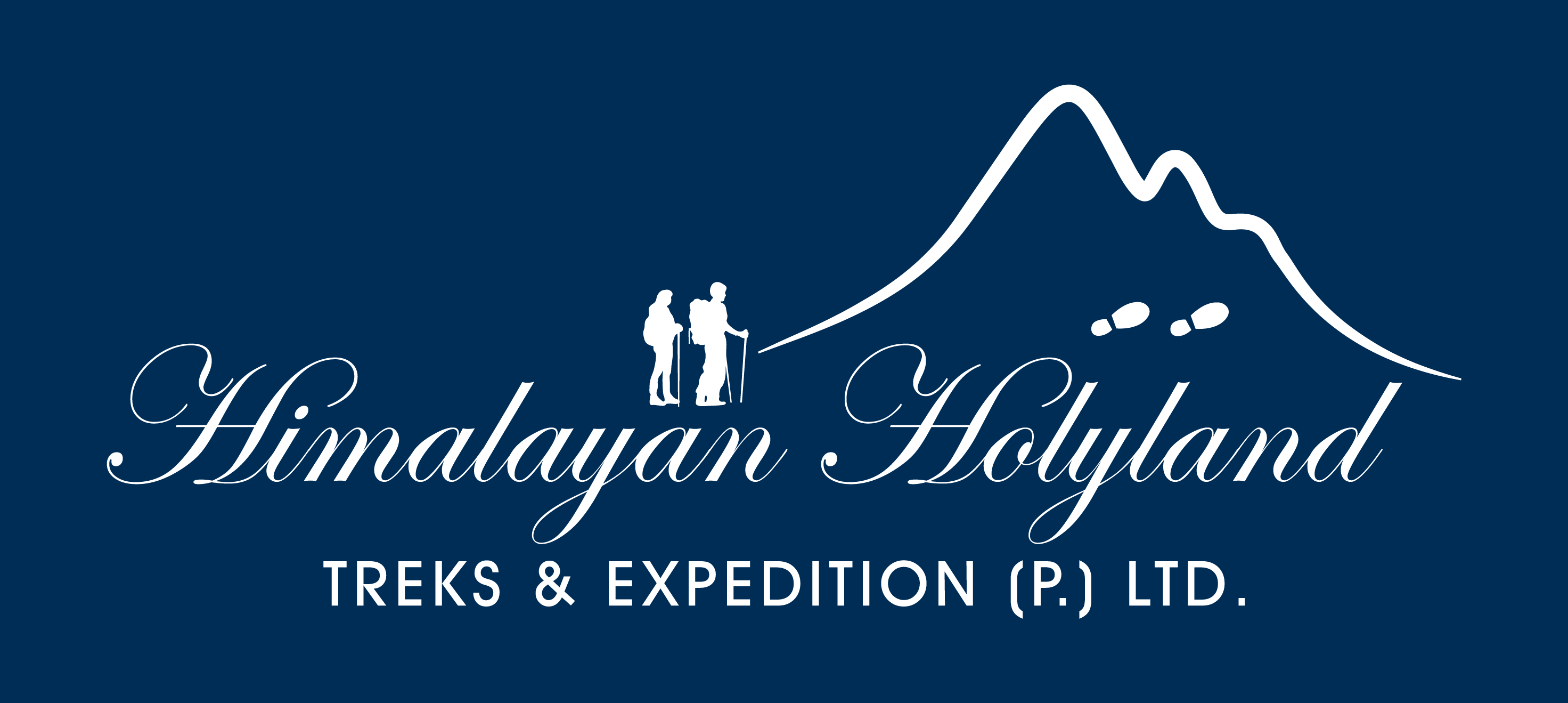



 +977-9808029724
+977-9808029724